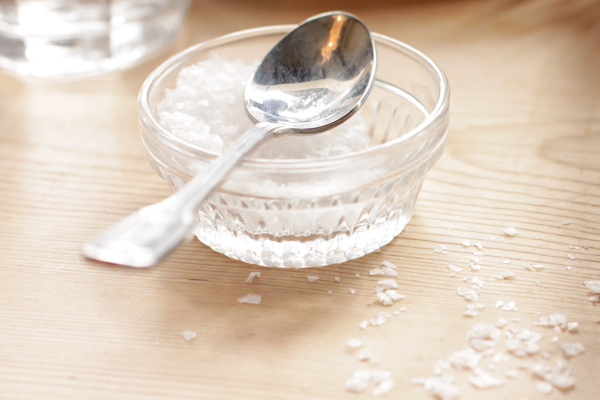
Sea salt
Since being diagnosed with Meniere’s Disease and migraines in January, I have gone low-sodium. I’m going to be sharing some of the things I’ve learned since then, as they are relevant for everyone, not just people with Meniere’s. (Meniere’s is a condition where the body holds onto sodium, causing excess pressure in the inner ear chambers. This can affect balance, hearing, and cause vertigo.)
When I was diagnosed, I was handed a low-sodium diet sheet by the doctor. It described a “moderate low-sodium diet” as 2000 mg of sodium per day. Once I started researching, I realized that the sheet was sadly out of date, as the American Heart Association (a fairly conservative group) recommends no more than 1500 mg per day for everyone over 50. Further research led me to two websites, Sodium Girl and Megaheart. Both included inspiring health-recovery stories at far lower levels, around 500 mg per day.
How is this wide a discrepancy possible?
Western medicine moves slowly, and official recommendations tend to err on the side of conservative. Once I learned that the body easily gets enough sodium naturally occurring in food (300-700 mg / day), I stopped worrying about whether I was going to get enough and just worked on reducing my intake and learning how to cook low-sodium.
The thing that should be emblazoned across the top of the diet sheet?
It takes two-three months for your palate to adjust to low-sodium.
Until then, food tastes pretty terrible. In the program I’m developing, I’m taking a gradual, step-down approach, as it would have been FAR easier for me to step down 500 mg per week, instead of trying to do it cold turkey. If someone was eating highly processed foods, it takes longer. If you are eating far more whole foods, but still eating salt, then it should take about two months.
Here’s a few other factoids that I found shocking:
- 90% of all Americans will develop hypertension in their lifetimes (without diet changes).
- Hypertension is not a given, though, it’s a disease of civilization caused solely by the Western diet.
- Americans eat far too much sodium, most from processed foods and added salt.
- People with chronic migraines have double the risk of hypertension.
- A high-sodium meal may trigger headaches. (This is definitely the case for me!)
- We need a small amount of sodium for our bodies to function properly, estimated to be around 500 mg. per day, which is naturally occurring in the whole foods we eat. We do not need added salt.
- Primitive humans probably ate between 400-800 mg. sodium per day.
- The standard American diet can range from 3000-5000 mg. sodium per day. For example: A Happy Meal contains 810 mg. of sodium. A Quarter-Pounder with cheese and large fries contain 1800 mg. of sodium.
- After two months, low-sodium foods taste really good.
It’s reported that low-sodium diets can improve:
- Diabetes symptoms
- Carpal tunnel syndrome
- PMS symptoms
- Meniere’s Disease dizziness and vertigo (especially important is to maintain a daily average that’s consistent, best under 1000 mg by self-reports on Megaheart.com)
All the recipes on my blog that are labeled low-sodium have fewer than 140 mg. of sodium per serving, and many are far less. I now cook completely salt-free, and am finding some great alternatives in my spice cabinet. I’ll be sharing tips and tricks on Thursdays from time to time.





Leave A Comment